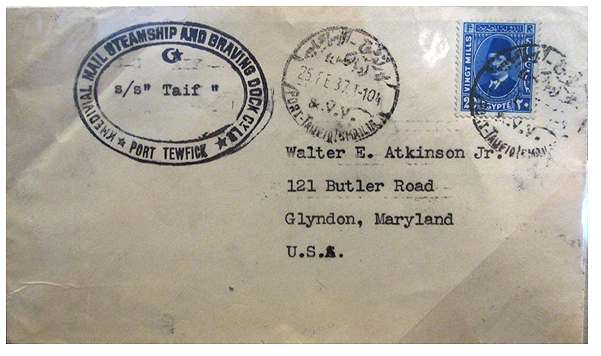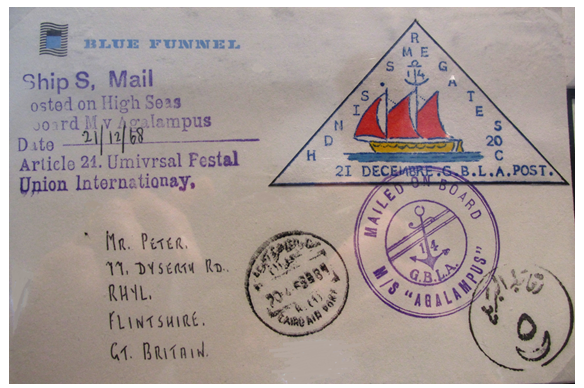PRESENT: Twelve members attended; there were apologies from ten members
The Chairman opened the meeting – in the Allenby Room, which we had been told only on Thursday was flooded - by welcoming especially Edmund Hall, despite his continuing illness, and Tony Cakebread (ESC 536), of New Zealand, on his first meeting appearance after 16 years’ membership.
Both were immediately in action, Edmund attempting to boost members’ use of the Circle website at egyptstudycircle.org.uk with a direct live online glimpse into some of its wonders and showing how recent advances could perhaps help to resolve the problem of shortage of QC articles. He has been busy preparing for the site all back copies of the QC, L’OP and Egyptian Topics, as well as Peter Smith’s Egypt masterpiece. And in the very near future all of these will be searchable online, allowing any member to discover what has been published on his/her topic and giving an instant insight into what is recorded, and what might be new … a boon to an article writer.
Another advance mentioned later was the idea of developing articles written potentially by the whole membership, starting with a brief “stub” report (a la Wikipedia), which could be advanced by anyone interested adding his own information or elements of his own collection until the piece developed into a full digest of the topic. A possible case might be the study report on TPOs on the website, updating Peter Smith’s book with no fewer than 70 pages of detailed postmark research provided by members. It is there for all to see. Further updates of dates or types will be welcomed.
Tony Cakebread gave members further details of the wish of our late Antipodean Agent, Tony Chisholm, to bequeath to the Circle his enormous archive of 20,000 illustrations of Egyptian postcards, saved over a lifetime. He explained that the archive is housed on the hard drive of an outdated Apple Mac machine, and there was much discussion of how it might be released from Apple’s clutches. The discussion will continue, but the Circle is grateful indeed both to Tony Chisholm and to Tony Cakebread for their efforts in bringing this fantastic resource to the Circle.
The Secretary then reminded members of the forthcoming New York World Stamp Show (May 28-June 5), at which at least 11 ESC members will be exhibiting, with nine displays of Egypt material. There was also an advance notice of Spring Stampex 2017 (Feb 15-18), which will be themed on the old Ottoman Empire – Egypt exhibits will be very much welcomed; details as they come to hand. The meeting voted to accept two new regular members in Samer El-Zalabany of Egypt and Kevin J Everett of Japan – and also, in a new development promoted via our new Facebook page which welcomed seven temporary members offered restricted access to the website, the online QC and the auctions. The free membership (limited to “open” pages on the site) will last to the end of the year, after which we hope the newcomers will be so pleased with what they have seen that they will wish to take up full membership. This new venture, we hope, will both boost falling member numbers and attract younger members to carry us into a successful new future.
The Editor welcomed a pleasing increase in the number of QC articles received, but regretted that the vast majority of the writes were the “tried and true” and hoped for contributions from some unfamiliar pens. See above for some suggestions about how articles might be developed.
Admin out of the way, we welcomed our President, John Sears, to display some of his Khedivial Mail collection. He took us through an extraordinary voyage of discovery throughout the Mediterranean, detailing development of routes and wartime problems, and was able to display an outstanding collection of illustrations of the line’s ships and the vessels’ handstamps on mail to and from Egypt.
An interesting aspect was the change of name of the line, which started life as the Egyptian Mail Steamship Co, became the Khedivial Mail Line, was taken over by P&O in 1919, renamed again in 1936 as the Pharaonic Mail Line – and always seemed to be in financial trouble, rarely making a profit despite the great service it provided in carrying the mails. He detailed especially the El Malek Fouad, later renamed the Nefertiti, and was able to show “bottle mail” thrown overboard in the Straits of Messina with both handstamps.

25 FE 37, Khedivial Mail Line cover with ship’s name Taif typed into the handstamp, probably held in Port Taufiq
|
The Khedivial Mail Line was followed by another maritime theme – Jon Aitchison on the Great Bitter Lakes Association, that is, mail to and from the 14 international ships detained in the Suez Canal after June 5 1967 when hostilities broke out. During the eight years the vessels were confined their crews created a quite remarkable series of home-made stamps – 893 of them at least, the first issued on October 21 – partly to offset boredom, partly to pay for postage of outgoing mail.
There was no regular outgoing service, but the Egyptian authorities accepted the hand-printed “stamps”, and the UPU ruled that any authority that could legitimately handle the post in an area of disruption was entitled to carry the mails. As a result, not a single postage due stamp is known on the sought-after covers from the GBLA.
The display followed stamp production through from crude initial attempts (clearly the designers were not stamp collectors) to very sophisticated designs, some of them perforated, including even potential forgeries made after the event. Multiple bags of incoming mail found aboard after the siege was over were sent to West Ham sorting office for processing – and were finally delivered eight years late.

21.12.68, cover from the Agalampus to UK with triangular GBLA stamp and cachet quoting the UPU ruling
|
The Chairman welcomed “two most enlightening and most erudite” displays; and members showed their appreciation in the usual manner.
|

